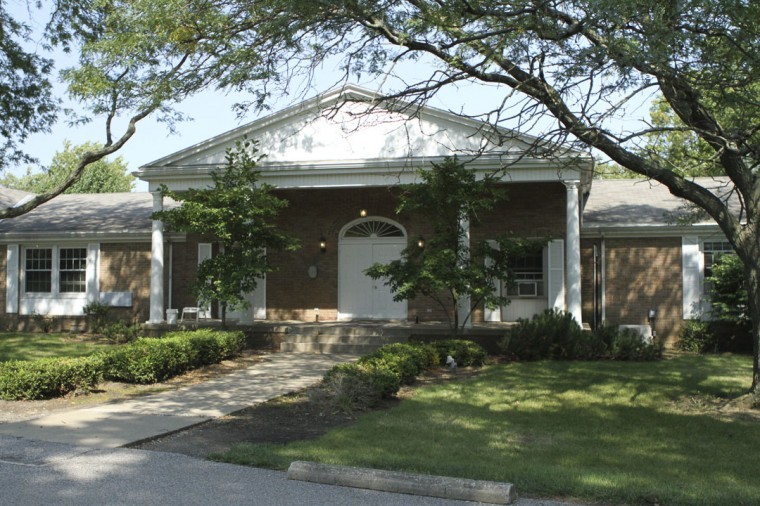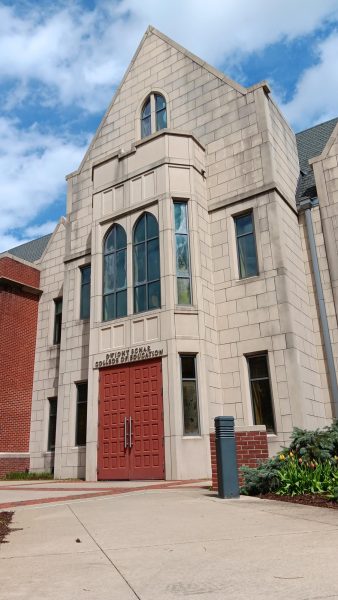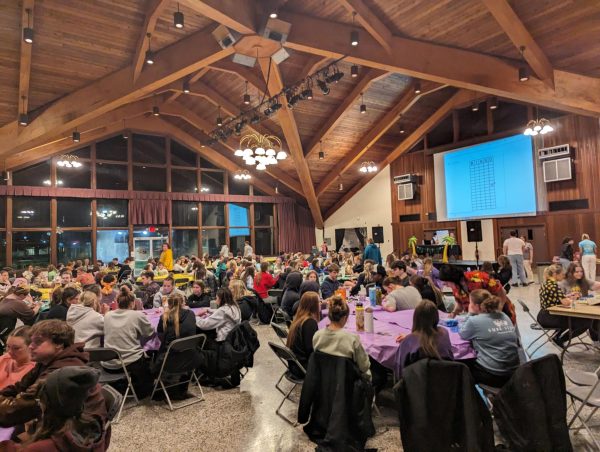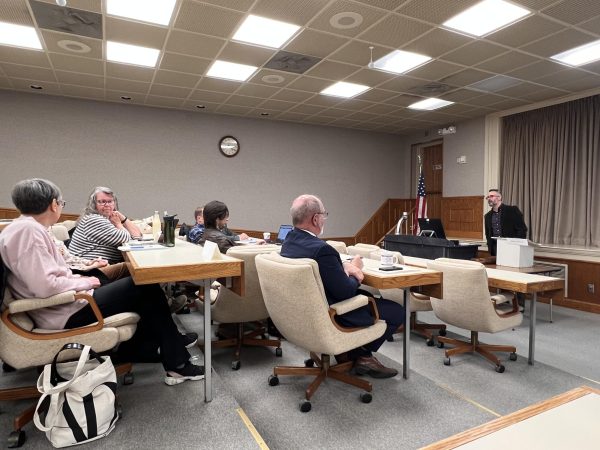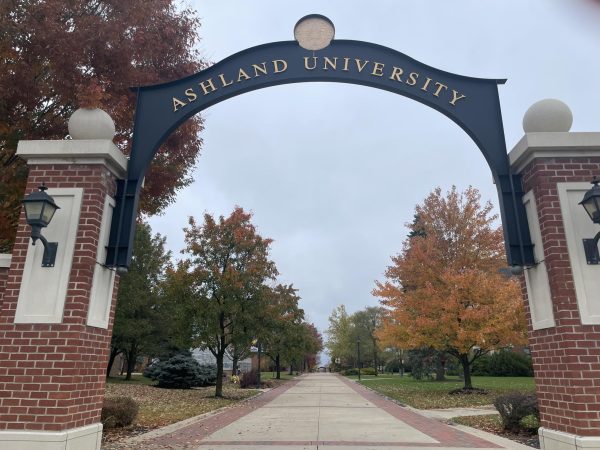Transformation of The House
September 22, 2011
Situated in the center of the frat circle on the eastern end of campus, The House is one of the smallest dorms on campus. With only 20 rooms on two floors, The House can hold a maximum of 40 students. Exclusiveness also lends itself to some of the nicer features of The House not found anywhere else. For instance, The House features two large common rooms, one including a pool table and table tennis complete with readily available equipment. There is also a sizeable wooden-floored area perfect for meetings or activities of any sort and a full kitchen with almost every appliance necessary to make any type of meal.
There is one laundry room in the house with four dryers and washers, but this laundry is free, no cost to anyone living in The House. However, there are rules against students living in other dorms trying to use this laundry and they will be thrown out if caught using this feature. The individual rooms for the students are larger than Amstutz, Kem, Clark or Kilhefner, and feature considerably more floor space while using similar furniture to Kem. Lastly, and most importantly, in every room of The House, there is an air conditioner installed in the wall that can be controlled by the student with a remote control to cool the room to a low of 60 degrees or to heat a room to a maximum of 86 degrees. This feature turns almost every students’ head. No more armies of fans in the hot months and no more layers of blankets in the cold. This simple, yet in-demand, feature is a college student’s dream but does it outweigh the distance from the Fraternity Circle to the rest of campus?
Many students would say that the distance to classes is a big factor in deciding where to live on campus, sometimes even more so than controllable air conditioning. However, with Ashland being such a private and small campus, the walk to classes compared to dorms such as Andrews, Amstutz or Kem adds no more than a minute or two to the walk. With this one arguable downside and the many appealing upsides, one wonders why there are only 18 students living in the 20 rooms of The House.
This oddity is in part due to the changes The House has gone under since last year. In the spring of 2011, Residence Life teamed up with International Student Services to change what was the “Senior House,” a place limited to only seniors, into the “International House” to create a living-learning community such as that of Andrews’ Ashbrook floors or the Honors floors in Jacobs and Clayton. The idea was to have International students and American students all living together in one co-ed house to stimulate cooperative learning and become introduced into each respective culture. However, this idea did not gain enough ground to continue as only five male and four female international students signed up to live in the “International House.” Thus, the choice was made to remove any forename and change the identity of the building into “The House,” preserving aspects of the “International House” and the “Senior House.”
During this past summer, emails were sent out to students living in Andrews Hall and Amstutz Hall, offering the students a choice to switch from their hall of choice to The House. Some students took up this offer and helped The House reach the number of students it has today. However, there are rooms that are not yet full in The House and some remain completely empty.
“We’re happy to show male students the space and help them in the process of moving if they wish. All they have to do is contact us,” Director of Student Life Catherine Geletka said.
The House is scheduled to stay in the state it is for the remainder of the year but Res. Life still plans on making it a living-learning environment of some kind. With no concrete plans as to the future of The House, Geletka remains optimistic.
“The greatest moments are the ones where a student comes up with an idea and I can say, ‘That’s amazing! That would be wonderful! I would have never thought of that,'” Geletka said.
So if any student has an idea concerning what The House could possibly be in the future as a living-learning environment for the 2012-2013 school year, contact Res. Life or Geletka to communicate the idea and help plan out what incarnation The House will take next year.
Situated in the center of the frat circle on the eastern end of campus, The House is one of the smallest dorms on campus. With only 20 rooms on two floors, The House can hold a maximum of 40 students. Exclusiveness also lends itself to some of the nicer features of The House not found anywhere else. For instance, The House features two large common rooms, one including a pool table and table tennis complete with readily available equipment. There is also a sizeable wooden-floored area perfect for meetings or activities of any sort and a full kitchen with almost every appliance necessary to make any type of meal.
There is one laundry room in the house with four dryers and washers, but this laundry is free, no cost to anyone living in The House. However, there are rules against students living in other dorms trying to use this laundry and they will be thrown out if caught using this feature. The individual rooms for the students are larger than Amstutz, Kem, Clark or Kilhefner, and feature considerably more floor space while using similar furniture to Kem. Lastly, and most importantly, in every room of The House, there is an air conditioner installed in the wall that can be controlled by the student with a remote control to cool the room to a low of 60 degrees or to heat a room to a maximum of 86 degrees. This feature turns almost every students’ head. No more armies of fans in the hot months and no more layers of blankets in the cold. This simple, yet in-demand, feature is a college student’s dream but does it outweigh the distance from the Fraternity Circle to the rest of campus?
Many students would say that the distance to classes is a big factor in deciding where to live on campus, sometimes even more so than controllable air conditioning. However, with Ashland being such a private and small campus, the walk to classes compared to dorms such as Andrews, Amstutz or Kem adds no more than a minute or two to the walk. With this one arguable downside and the many appealing upsides, one wonders why there are only 18 students living in the 20 rooms of The House.
This oddity is in part due to the changes The House has gone under since last year. In the spring of 2011, Residence Life teamed up with International Student Services to change what was the “Senior House,” a place limited to only seniors, into the “International House” to create a living-learning community such as that of Andrews’ Ashbrook floors or the Honors floors in Jacobs and Clayton. The idea was to have International students and American students all living together in one co-ed house to stimulate cooperative learning and become introduced into each respective culture. However, this idea did not gain enough ground to continue as only five male and four female international students signed up to live in the “International House.” Thus, the choice was made to remove any forename and change the identity of the building into “The House,” preserving aspects of the “International House” and the “Senior House.”
During this past summer, emails were sent out to students living in Andrews Hall and Amstutz Hall, offering the students a choice to switch from their hall of choice to The House.


